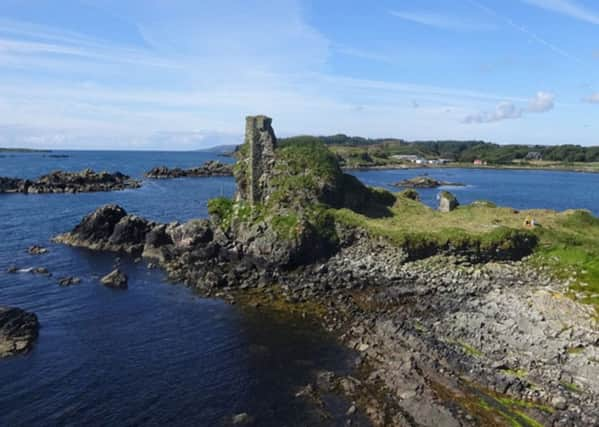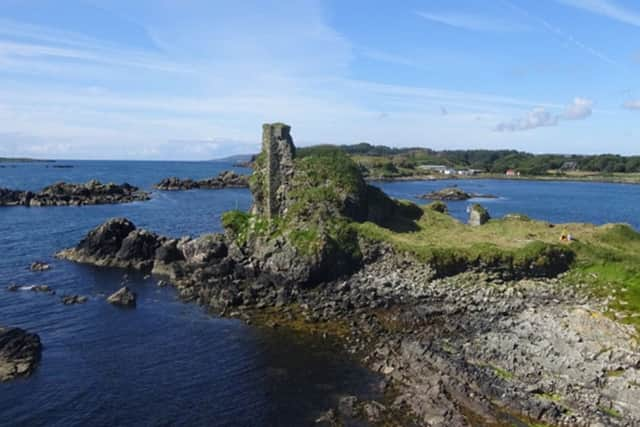Rare Scottish clan artefact dug out of rubble after 400 years


The seal of Sir John Campbell was uncovered during an excavation at a historic site.
It was discovered on a hidden clay floor at the Dunyvaig Castle on Islay in Argyll.


Advertisement
Hide AdThe rare find dates back to the 1600s when the Campbell and MacDonald clans were locked in a violent and bitter feud over Scotland’s islands.
Buried below mounds of rubble, the find was described “remarkable” and “extremely rare” by archaeologists and historians.
The seal is a circular disc of lead that carries the inscription IOANNIS CAMPBELL DE CALDER. Calder was the original spelling of Cawdor.
The artefact carries the Cawdor coat of arms with a galley ship and a stag. It is dated 1593 and is thought to have been used to sign and seal charters and legal documents.
Student Zoë Wiacek, from the University of Reading, discovered the seal during the dig.
She said: “I removed a piece of rubble and it was just sitting there on the ground.
Advertisement
Hide Ad“I immediately knew it was an important find, but had no idea what it was.
“I called over my trench supervisor and when it was lifted, the soil fell away to show the inscription. Then everyone became excited.
Advertisement
Hide Ad“I am so proud to have found something so important for the project and for Islay.”
Archaeologist Dr Darko Marievi, director of the excavation at Dunyvaig, said: “This is a remarkable find.
“Not only is it a beautiful and well-preserved object, but it comes from the floor of a building that we can now confidently date to the Campbell occupation.
“So buried below this floor, we will have the story of the MacDonald’s – the Lords of the Isles – to reveal.”
Roddy Regan, an archaeologist at Kilmartin Museum, said: “Seals are extremely rare finds.
“This discovery conjures up an image of a Campbell garrison fleeing from the castle when under attack, dropping and losing one of their most precious items, or maybe the seal had once been hidden within a wall niche and long forgotten.”
Advertisement
Hide AdThe Campbells and the MacDonalds fought over Dunyvaig in the early 17th century, with a series of bombardments of the castle until the Campbells finally prevailed.
Sir John took ownership of Islay in 1615.
Mr Regan said the seal could have been lost in a later raid in 1646 when Alasdair MacColla, a descendent of the MacDonalds, reclaimed the castle.
Advertisement
Hide AdHe said: “Alasdair MacColla, a descendent of the MacDonalds, retook the castle and installed his elderly father, Colla Ciotach, to defend it.
“The castle was immediately besieged again.
“We may have Colla Ciotach’s hasty defences in the form of turf walls built above the already ruined stone walls of Dunyvaig, before he was forced to surrender in 1647 and then hanged from the castle walls.”
The excavation at Dunyvaig is being undertaken by charity Islay Heritage in partnership with the University of Reading.
A team of around 40 experts, including leading archaeologists, geophysicists, scientists and environmentalists, are almost at the end of an initial three-week dig.
Professor Steven Mithen, chairperson of Islay Heritage and director of the Dunyvaig Project added: “Coming towards the end of the dig, after the team had worked so hard to move huge amounts of turf and rubble, this has been a thrilling discovery.
“We have found a piece of Islay’s past and Scottish history. We can’t wait to start digging again in 2019.”
Islay Heritage hopes to raise further funds to allow excavation work to continue at Dunyvaig over the next five years.
